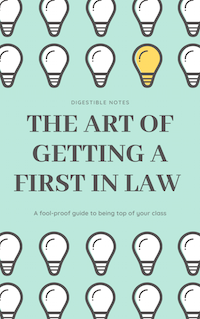Self Defence
The legal source of the defence
⇒ The reqirements of private defence are:
- The defendant was (or believed he or she was) facing an unjust threat from the victim.
- The defendant used a level of force against the threat (or the threat as it was believed to be) which was reasonable in the circumstances.
⇒ So there is a complete defence to those who use force in order to defend themselves or another person from an unjustified attack.
⇒ There is some confusion in that this defence has two separate legal sources:
- At common law a person has a defence he or she is defending himself or another from an attack.
- Under section 3 of the Criminal Law Act 1967:
- A person may use such force as is reasonable in the circumstances in the prevention of crime, or in effecting or assisting in the lawful arrest of offenders or suspected offenders or of persons unlawfully at large.
- Subsection (1) above shall replace the rules of the common law on the question when force used for a purpose mentioned in the subsection is justified by that purpose.
⇒ Fortunately the courts have held that the rules governing commonn law private defence and section 3 coexist i.e. the legal rules are the same whichever form of the defence is used (R v Cousins [1982]).
To what crime is self-defence a defence
⇒ Some cases suggest that self-defence appears to be available only to a defendant who is charged with a crim that involves the use of force and so is not available to an offence such as possession or parking on a double yellow line. This was stressed in R v Renouf [1986]
⇒ The requirement that the defence involve use of force was confirmed in Blake v DPP [1993].
What needs to be shown to establish the defence?
The Art of Getting a First in Law - ONLY £4.99
FOOL-PROOF methods of obtaining top grades
SECRETS your professors won't tell you and your peers don't know
INSIDER TIPS and tricks so you can spend less time studying and land the perfect job
We work really hard to provide you with incredible law notes for free...
The proceeds of this eBook helps us to run the site and keep the service FREE!

The victim must pose a threat
⇒ The victim must pose a risk to the defendant or someone else.
- However, see the case of R v Hitchens [2011].
⇒ There is no doubt that the defence applies whether the threat is being posed to the defendant or another person, but there is doubt whether itiis possible to use the defence when protecting property.
- The Court of Appeal in R v Faraj [2007] suggested that reasonable force to detain an intruder in order to protect property was reasonable, but aggressive force should not be used.
- See the case of R v Burns [2010].
The threat must be unjustified
⇒ If Tim attacks Matt and Matt defends himself by using force on Tim, Tim cannot then use further force against Matt and argue that this was in 'self-defence' against Matt's attack.
- Here, Matt's use of force was reaonable and justified, therefore Tim cannot use self-defence as a defence against it
⇒ See the case of R v Jones [2006].
The use of force must be necessary
⇒ It must be shown that it was necessary to use force.
- This means that it must have been reasonable for the defendant to use force, rather than escape from the threat in some way.
⇒ The defendant does not have a 'duty to retreat' → the question is not would a reasonable person have retreated, but rather was ir reasonable for the defendant to use force.
⇒ The law does permit the defendant to take 'a pre-emptive strike' if to do so is reasonable.
The use of force must be reasonable
⇒ The defendant can successfully use the defence only if the level of force was reasonable in the face of the threat as perceived by the defendant.
⇒ It should be stressed that the question is whether a reasonable person would say that the level of force was reasonable, not whether the defendant thought the level of force used was reasonable (R v Owino [1995]).
⇒ Many commentators take the view that it is reasonable to cause greater harm in self-defence than is threatened.
- For example, many (but by no means all) commentators think it may be reasonable for a woman to kill a person who is about to rape her (e.g. Leverick)
- However, where the amount of force inflicted in self-defence is far greater than the harm threatened, the jury may conclude that it is at an unreasonable level.
The defendant must be acting in order to defend himself
⇒ A defendant who is acting not in order to defen him or herself or another, but solely out of revenge or retaliation will not be able to rely on the defence.
⇒ This is part of what become known as 'the Dadson' principle: the defendant cannot rely on the justifying circumstances of his or her actions of which he or she is not aware.
Self-induced
⇒ If the defendant caused the attack in the first place then he or she may not be able to rely on the defence.
- The question for the jury is whether the defendant's use of force was reasonable in light of the fact that he or she had instigated the fight.
⇒ See the case of R v Keane [2010].
Law Application Masterclass - ONLY £9.99
Learn how to effortlessly land vacation schemes, training contracts, and pupillages by making your law applications awesome. This eBook is constructed by lawyers and recruiters from the world's leading law firms and barristers' chambers.
✅ 60+ page eBook
✅ Research Methods, Success Secrets, Tips, Tricks, and more!
✅ Help keep Digestible Notes FREE

